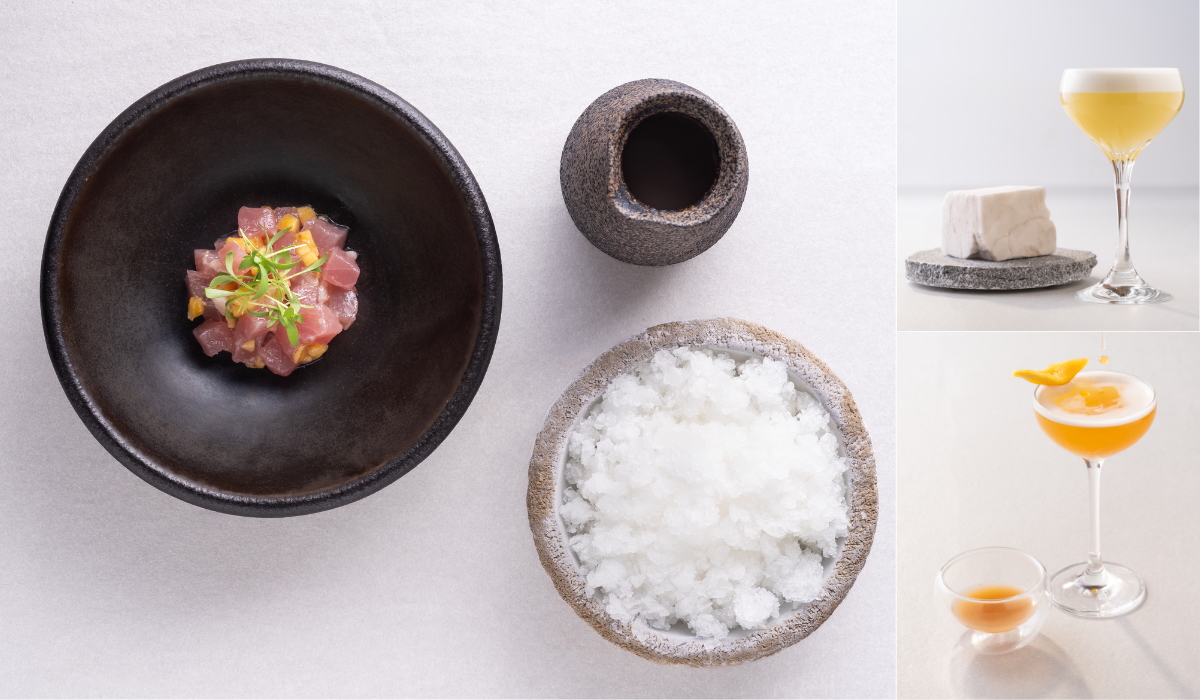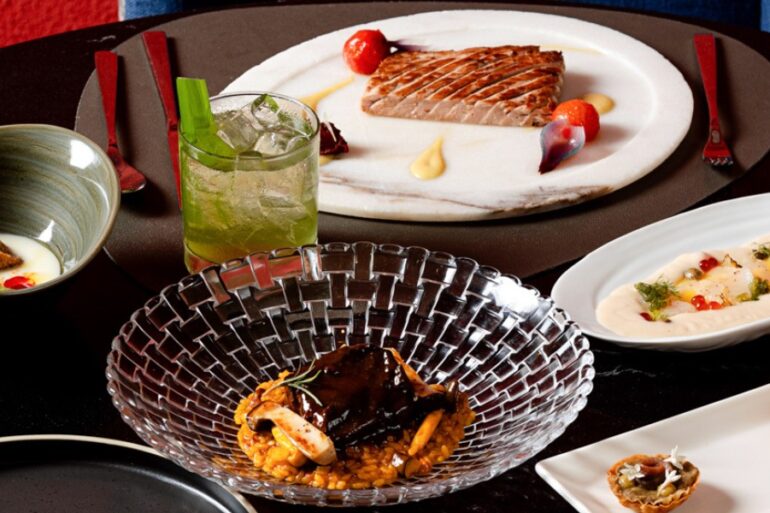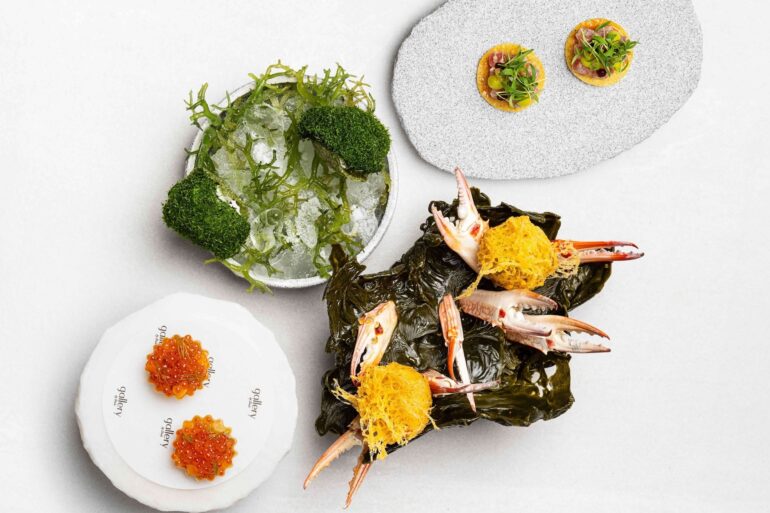Gallery by Chele’s collab with Wilkis and experimentation with coconut have yielded amazing new dishes and non-alcoholic drinks.
At Chef Chele Gonzalez’s Studio Lab, there is a team dedicated solely to do research and development, finding ways to push the boundaries of the ingredients they use for their innovative dishes at Gallery by Chele.
For their current Tree of Life menu, the coconut has been aged, fermented, milked, and dehydrated to discover different ways the fruit can be utilized. The results have become the base for the multi-course tasting menu that guests have been enjoying from the beginning of the year.
However, these coconut products have truly evolved in the last few months, their flavors and textures are suddenly different as their chemical components also change. That truly is the nature of working with a living ingredient, and with these changes the Gallery team is constantly finding ways to showcase these ever-evolving flavor profiles.
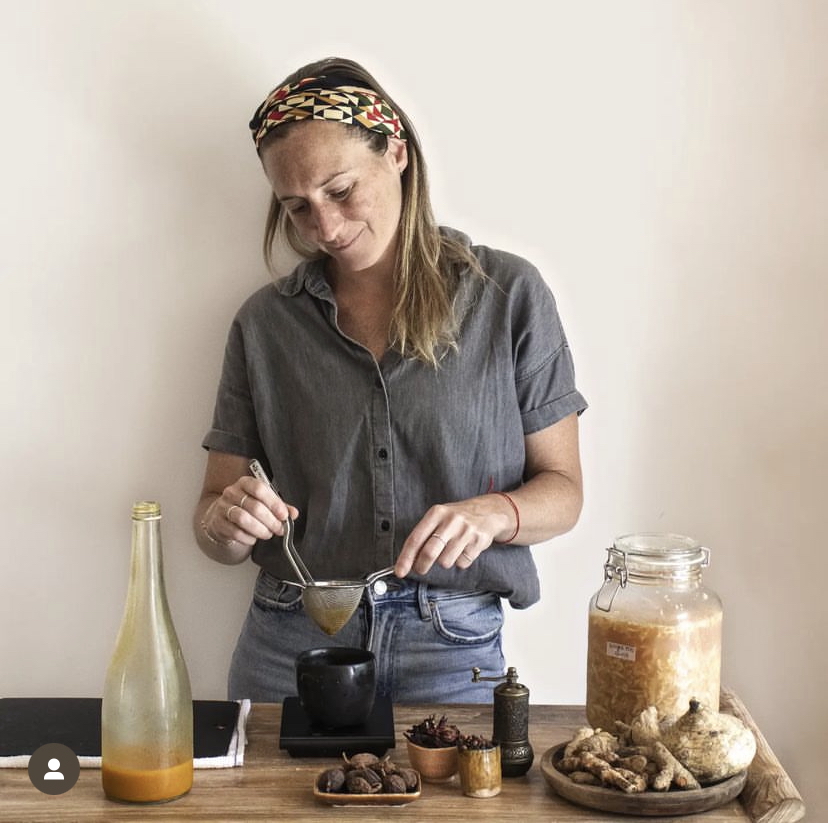
With these developments, the team proudly announces their collaboration with world-renowned beverage consultant and sommelier Marina Wilkis who previously did exemplary work with Mirazur, Central, and Locavore NXT, among many more notable establishments.
Wilkis is best known for her sustainable work in fermentation and her innovative concoctions of either craft cocktails or non-alcoholic beverages. For her collaboration with the team of Gallery by Chele, she uses as much of the coconut byproducts they sourced from local artisans as well as ingredients they developed in the restaurant.
“I enhanced the beverage program to align the drinks offering with the creative concept of the tasting menu, strengthening the harmony between flavors, storytelling, and identity,” she explains.
Related story: Cantabria by Chele Gonzalez boasts new flavors—and a new Spanish chef
Related story: Food and diplomacy: How Singapore’s diverse cuisine is soft power on a plate
Related story: A tale of two stunning designs
The Tree of Life menu grows
The Tree of Life menu is still essentially as Gonzalez and his team conceived it, but with a few minor changes to reflect how their ingredients have evolved in the past months. It now features a more elevated version of their non-alcoholic beverage program that can be supplemented as a pairing, alongside their cocktail pairing and wine pairing.
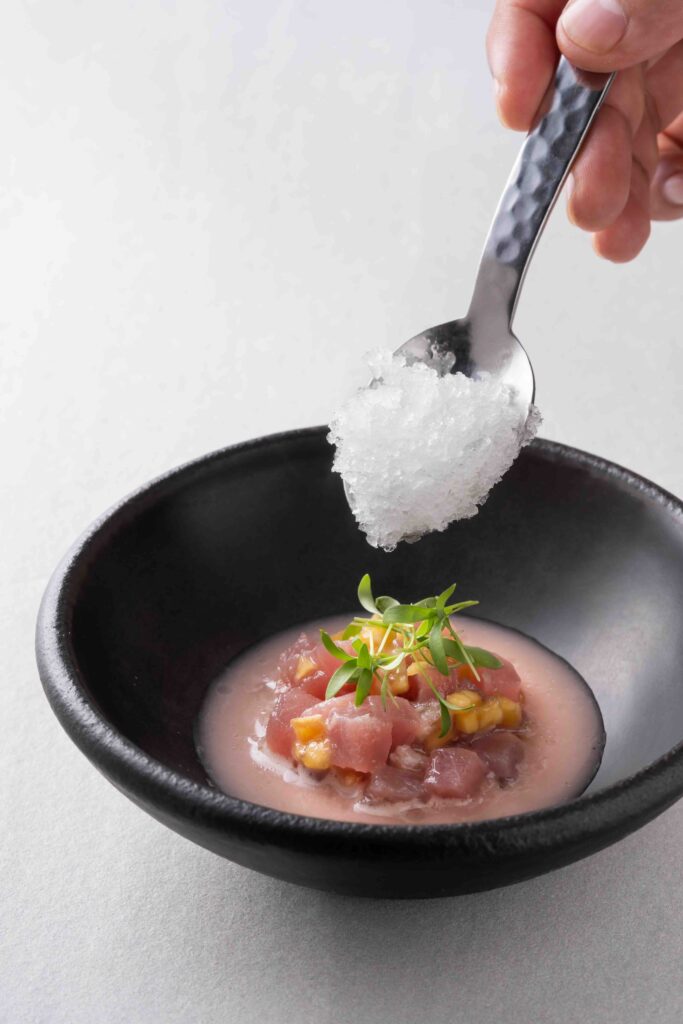
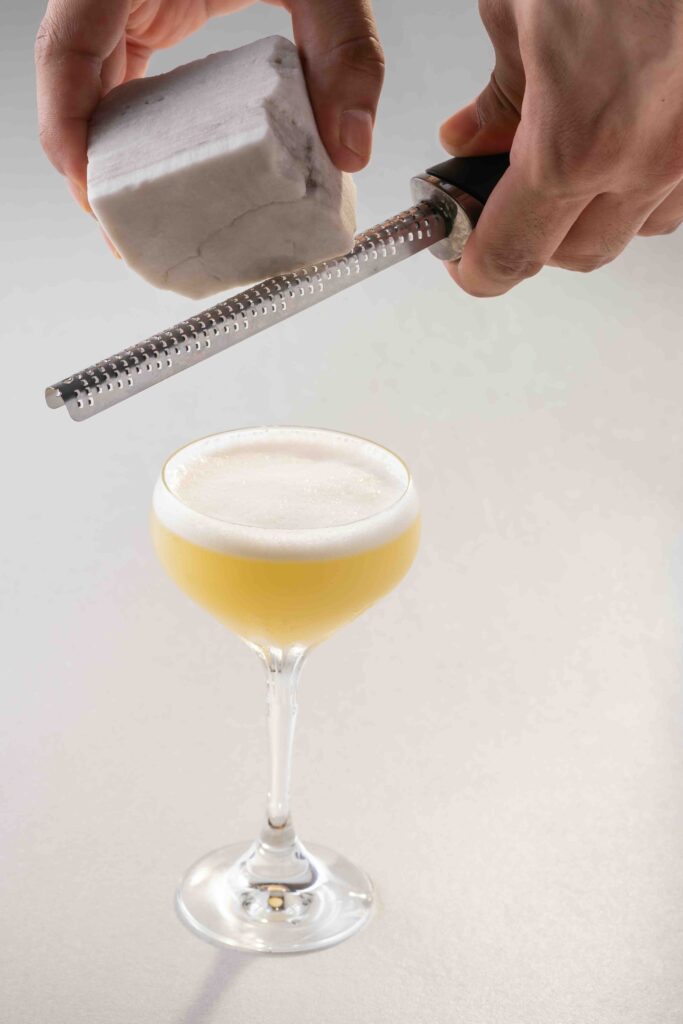
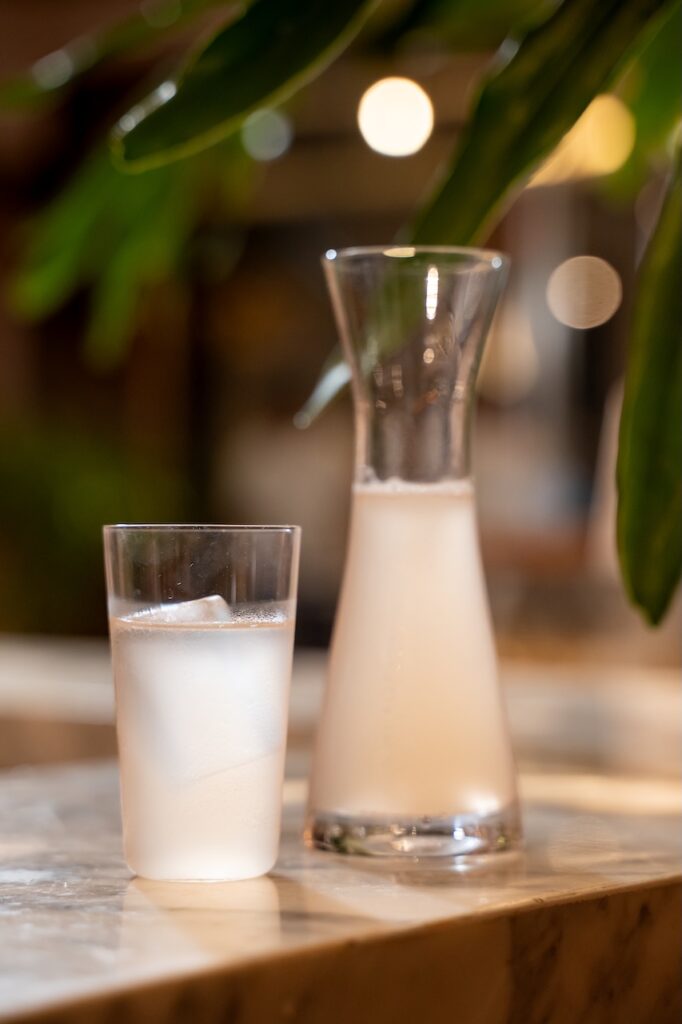
“The best restaurants in the world are now more conscientious about the demand for non-alcoholic beverages for those who are following a certain lifestyle or simply wanting to try something new,” says Gonzalez, “which I believe is also in tune with the movement towards sustainability.”
Wilkis’ work with the Gallery team had her using various coconut products for liqueur, syrups, purees, infusions, and ferments that were in turn used for dishes and beverages, pairing both seamlessly.
Non-alcoholic pairings
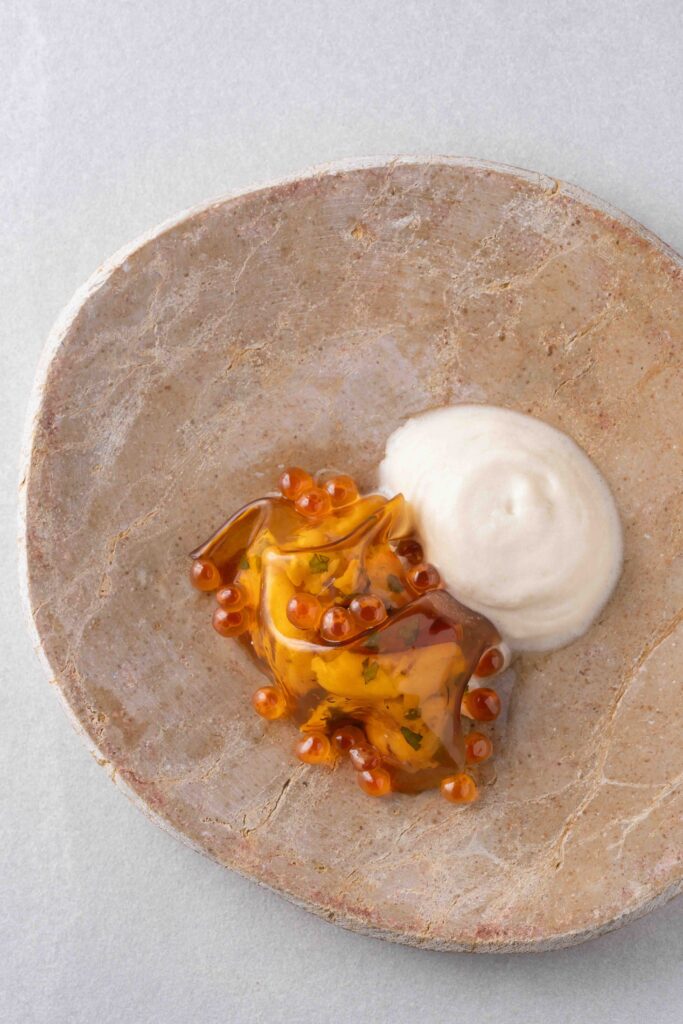

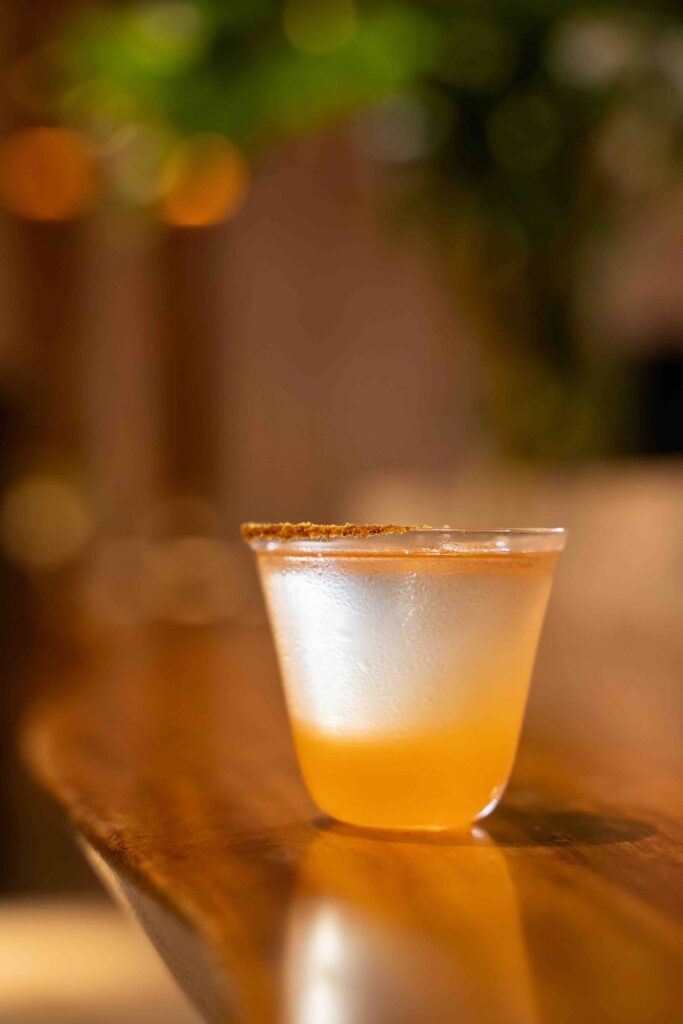
These fortified ingredients are the base for a few new dishes paired with equally intriguing beverages. A kinilaw of ginger-marinated tuna flavored with the tropical notes of mangosteen and banana gives it a Southeast Asian twist. Soaked in leche de tigre, it is given a Filipino touch with the use of various coconut ingredients such as its juice, milk, and vinegar, then finished with a refreshing lime-coconut granita. Usually tough to pair with wine because of its acidity, but the lambanog sour with kamias or the non-alcoholic tuba drink with batuan lemongrass syrup compliments this dish perfectly.
Gonzalez shares that the crab dish comes from his fascination with guinataang alimango which is definitely not something he grew up eating in Spain. ““I never saw this in Spain before, where crab is simply grilled, steamed, or boiled in water,” he admits. “But here I thought it was an amazing way to cook crab that remains respectful to its flavors, to boil it in coconut milk with ginger, lemongrass, and aromatics.”
You get hints of dashi from where they boiled the crab, and then finished with mint, lime, and a delicate coconut espuma. Drinks to match are amino-based— one is a highball with green tea kombucha and tapuey, the other a genmaicha soda with flavors of toasted rice and seaweed. These drinks were also meant to go with the Palawan lobster topped with a flavorful XO sauce made from smoked coconut. Cooking it yakitori-style then served over calamansi puree, and then finished with uni sauce and fresh coconut milk.
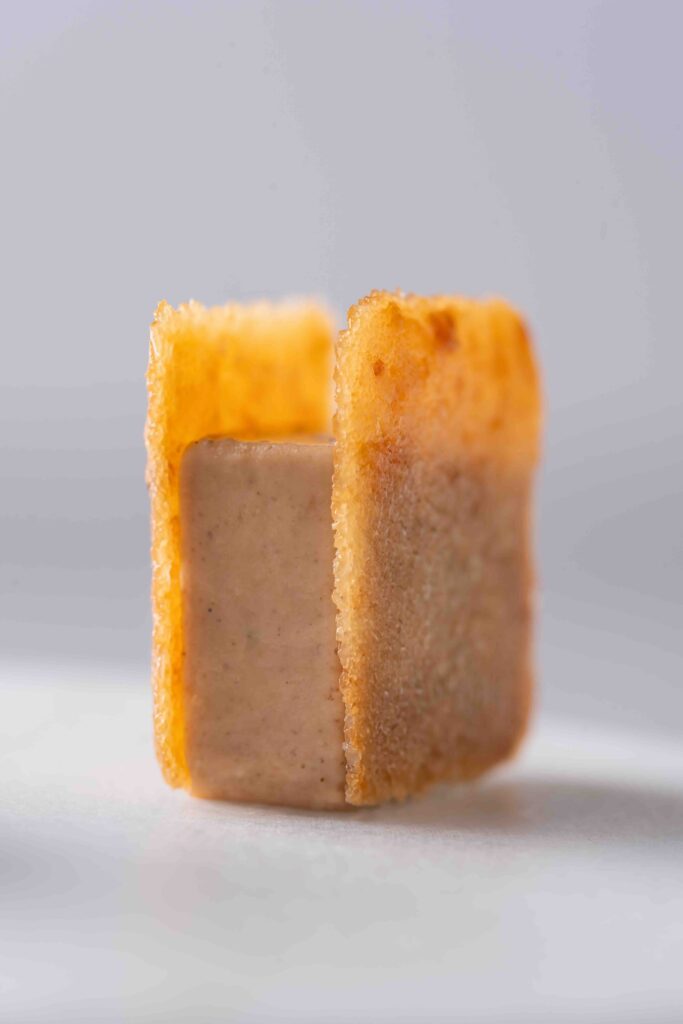
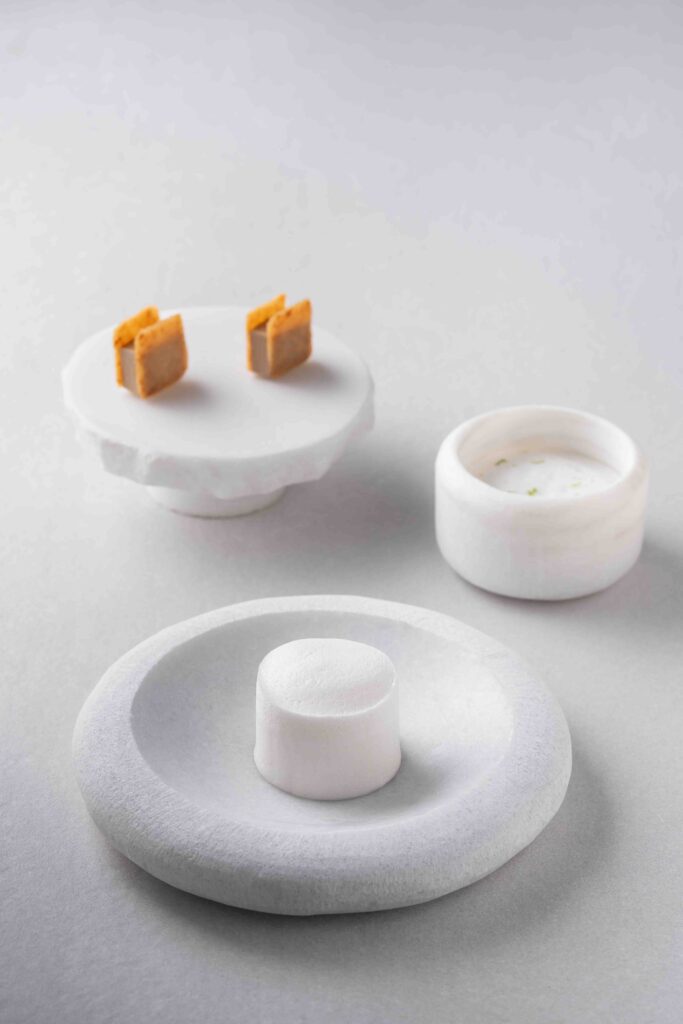
After an indulgent multi-course meal, most are too stuffed to enjoy dessert, but the Tree of Life menu’s light and airy sweet endings are truly a mindful adjustment, giving just the right amount of flavor and richness to cleanse the palate. There was a cold soufflé that ensconces rich dulce de leche, an espuma of coconut milk and buko, and a decadent latik ice cream sandwich. These were paired with either a latik liqueur enhanced with roasted coconut or a comforting coconut cream tea fragrant with kefir lime zest, ginger and coconut cream.
While it’s not unusual for chefs to tweak their seasonal menus as they go along, these beautiful and exciting modifications in the Tree of Life menu are rooted in natural growth and evolution. The nuanced changes are something that we can all truly enjoy for a second and third time, hopefully picking up on how this living ingredient is morphing and the way that Gonzalez and his team are showcasing them to their full potential.
Gallery by Chele is located at 5th floor, Clipp Center, 11th Avenue corner 39th St., Taguig. Call 09175461673 for reservations.

